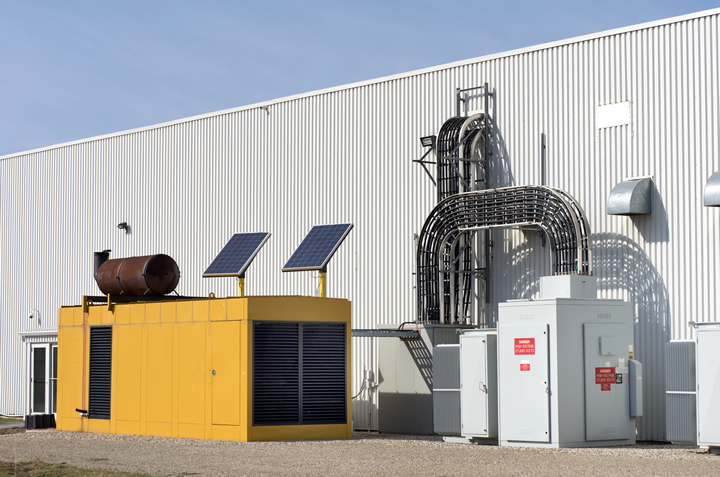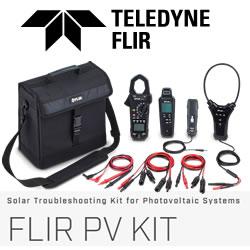Solar Creating Resilience in Disaster-Hit Areas

Recently, New Orleans experienced its largest hurricane since Katrina. Winds reaching 150 miles per hour tore down power lines and forced an energy tower into the Mississippi River. Residents remained without power for weeks.
As greenhouse gas emissions rise and the climate changes, researchers predict an increase in the frequency and intensity of natural disasters. Energy professionals are looking to renewables for support during power outages. They may utilize solar microgrids and generators to create resilience in disaster-hit areas.
Technological Advancements
Professionals are adopting solar power as a backup energy supply in vulnerable regions because of recent technological advancements. In the past, efficiency and accessibility limitations hindered renewable power’s ability to support society’s needs. However, scientific and engineering innovations are increasing the efficiency and reliability of solar power.
A significant challenge in disaster-prone regions is backup energy storage. Solar panels produce electricity during the day, but not at night. The weather may be unpredictable during outages, limiting production and a system’s ability to meet local power demands.
Environmental engineers developed a solar storage system, creating an abundant energy supply before a storm hits. Instead of directly transferring electricity to local homes, the technology stores energy in shipping containers as green hydrogen. During outages, the systems move hydrogen through a fuel cell, creating accessible electricity.
Researchers are also increasing panel efficiency rates, generating more electricity to improve a system’s reliability. Most panels are photovoltaic (PV), with an efficiency rate of 15-20%. Recent perovskite technology increases traditional silicon solar cell production rates to 28% on average.
Using panel advancements in conjunction with microgrid technology supports efficient and reliable disaster relief systems. The Vistra energy company developed a small-scale storage and production center that acts as a solar microgrid model for storm-prone regions. It contains a 1,200-megawatt-hour battery in an old smokestack, producing and storing enough energy to support 225,000 properties in Northern California.
When disaster-prone areas use solar technological advancements, they can develop effective outage relief systems. The systems increase power and community-level resilience following impactful events. Developing solar power support technology has various benefits for individuals.
Supporting Local Businesses
Disaster-related outages create adverse effects on local businesses. Companies in the U.S. lose nearly $150 billion annually from blackouts and brownouts. Solar power decreases an owner’s reliance on depletable and unreliable resources.
When communities install solar microgrids, they can enhance the economic turnaround following a storm. The technology also improves the health and well-being of society, increasing their access to food, water, and medical supplies during a disaster. Hospitals, major grocery stores, and other essential businesses can develop their own microgrids, reducing the effects of outages.
Enhancing Community Health
After natural disasters, many relief programs send in generators, increasing community electricity access. Most of the devices run on fossil fuels, producing greenhouse gas emissions during combustion. High air pollution regions create adverse health effects for community members.
Individuals have a higher risk of asthma and other respiratory illnesses in areas with elevated greenhouse gas emissions. When officials install solar microgrids for backup power, they decrease pollution and protect society’s lung health.
Lowering Energy Costs
Solar also creates resilience in frequent disaster regions, offering lower electricity costs. Today, solar power is the most cost-effective energy source on the market. When regions install solar systems as backup power, they decrease community restoration costs.
Increasing Repair Efficiencies
Using solar microgrids also improves the efficiency of electrical repairs. After Hurricane Ida, energy professionals worked around the clock because of high electricity demands. Worker stress decreased the accuracy of repairs and impacted their health and well-being.
Developing an effective and reliable solar microgrid could decrease the pressure on energy workers, helping them conduct restorations. It would also buy professionals some time, reducing the likelihood of overtime and unhealthy work environments.
Creating Solar Relief Systems Today
When it comes to developing solar microgrids, there is no better time than right now. We are in the midst of hurricane season, and many individuals face prolonged outages. Energy professionals can install solar grid support, increasing resilience, safety, and economic stability following natural disasters.
Author bio:
Jane works as an environmental and energy writer. She is also the founder and editor-in-chief of Environment.co.
Comments (0)
This post does not have any comments. Be the first to leave a comment below.
Featured Product

